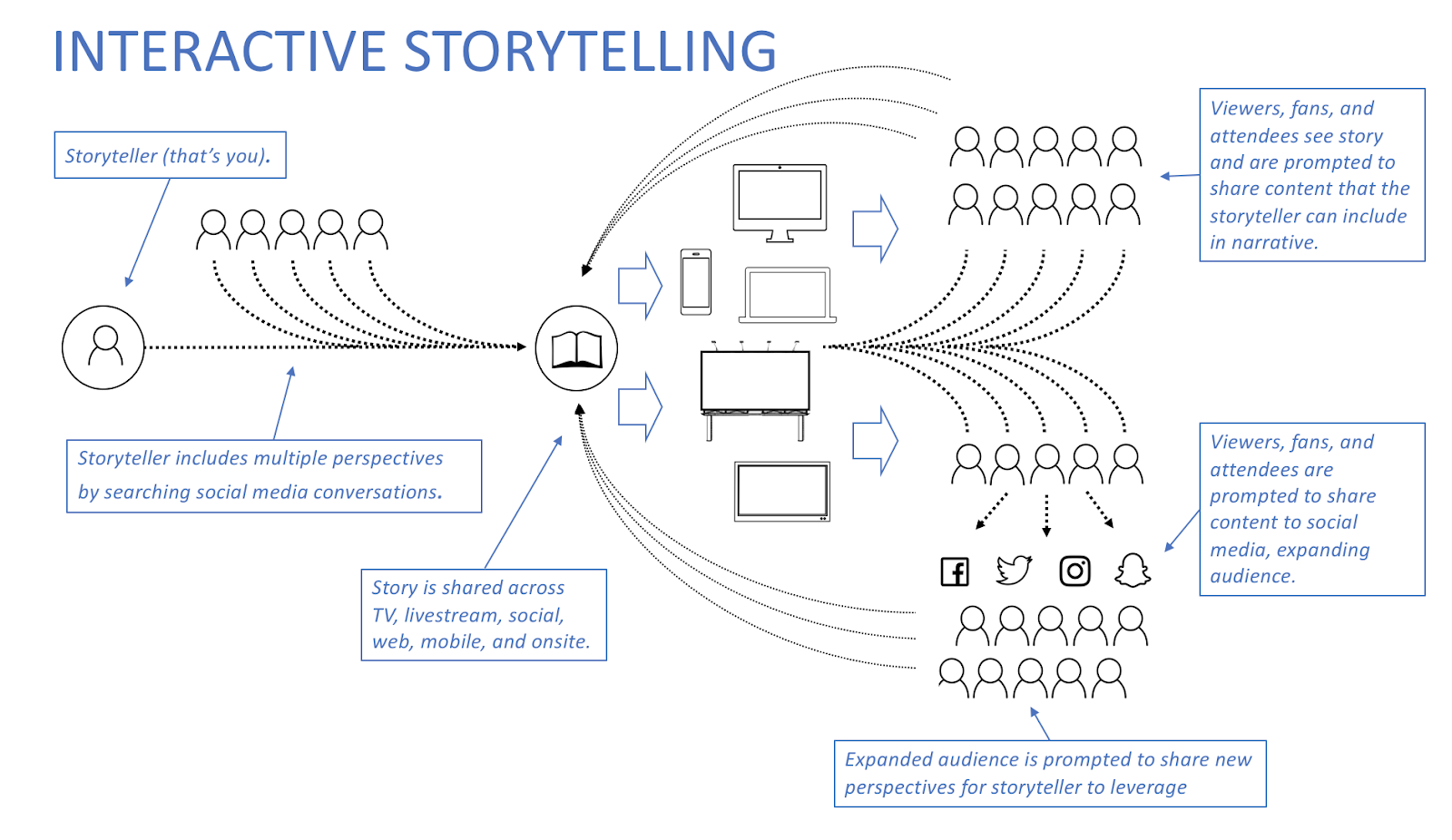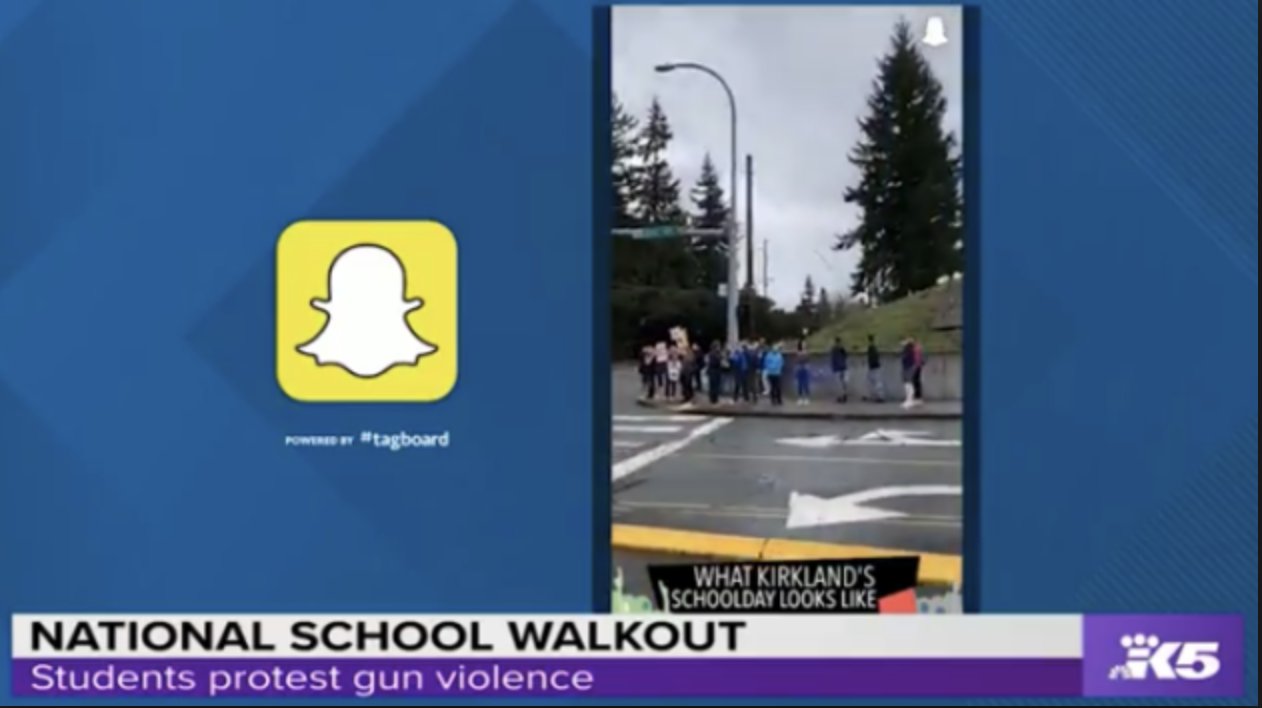There’s a commercial for The Oscars airing right now with a voice-over that says: “People love stories. Just so long as the people in the stories are us.”
I feel that.
Stories are what connect us. They make us a part of the experience.
Like most marketers, producers, journalists, and creators, I’m a storyteller. If you’re reading this, then there’s a good chance that you tell stories for a living too…stories that connect our audience with information that matters to them, to the world around them, to our products, to our teams, and to each other.
When we do our job well, storytelling can be profoundly human, and that makes it profoundly powerful. Stories can make our audience say, “That’s me. That’s us.” Sometimes, quite literally.
Unfortunately, we don’t always do it well.
When Storytelling Doesn’t Connect
Years ago, I screwed up. Thankfully, I haven’t done it since (don’t fact-check this, please). The company I worked for released a big new flagship product, and we knew (nay, thought) it was going to be a hit. We’d been talking about it internally for years. Industry experts had been preaching about the importance of this type of technology. We felt certain we were about to knock it out of the park.
It fell flat.
After a ton of reflection and self-flagellation, it became painfully clear what had gone wrong: We didn’t include our customers in the development of the story. We equated industry insiders and analysts with our end user, so we packaged the whole thing completely wrong. This seems simple on the surface, but I see companies miss this all the time. Had we gotten it right — which we eventually did — it would have resonated better because we would have used the language they wanted to hear, told the stories they wanted to tell, and included the social proof that they would have provided.
A friend and mentor who’d gone through the entire process with me said something that still rings true: “ The answer wasn’t inside the building.”
In order to tell good stories, build great products, create compelling events, and entertain folks, storytellers need to get outside the building and incorporate more diverse perspectives. Perspectives different from our own. Our own perspectives have a slant because we view everything through the lens of our own experience.
I recently watched a decade-old TED Talk by Novelist Chimamanda Adichie, discussing the danger of only having a single narrative, and how this shapes our perception of the world. It’s a great watch if you have the time.
In order to tell powerful stories, we need to include the audience in the story, from development to distribution.
Every Story Can Be Interactive
A story’s job is to resonate with the recipient, and it’s more likely to do that when it’s human, when it’s about them and people they care about.
This can feel like a daunting chore, but it doesn’t have to be. By following some simple guidelines, every story can be interactive.

1. Seek Out Different Perspectives

As you craft your story, seek out relevant content via social media. Who is talking about this topic? Are they recognizable figures among your target audience? Are they similar to your audience? What are they saying? How are they saying it? Think about how you can use that information to inform your own delivery, but also, how you can leverage their actual content to add validity to your story by incorporating it directly.
Take TEGNA for example. TEGNA owns local news stations around the country, and when nation-wide events take place like the midterm election or last year’s school walkouts, TEGNA journalists source Snapchat to find content and footage that have a much different take than their own cameramen and reporters would get.
“We’re thrilled to see TEGNA, in partnership with Tagboard, being able to use Snaps submitted from student organizers, reporters, producers, and other march participants to supplement their reporting, offering their viewers even richer visual context and more diverse perspectives.”— Rahul Chopra, Head of Stories Everywhere for Snap.
Learn more about how journalists, in particular, can source social for content from our Director of Production, Christine Borrmann, in her post “Searching the Social Media Haystack.”
2. Share Your Story Across Multiple Platforms
Your story will resonate more with your audience if it’s delivered in the format and on the channels that they already use to connect with the family and friends. Meet them where they are: on the web, mobile, live stream, at your event, in your stadium, or on TV.
NFL Teams do this as well as anyone. From pre-season live streams to web content dedicated to fan engagement, mobile apps, and in-stadium displays, fans are a part of the story at every turn.
Learn more about how to develop cross-channel fan engagement campaigns that excite your audience from Daniel Braun, our Sr. Sports Success Manager, in his post “Football and the Fans: What Marketers Can Learn from Gameday and Beyond.”
3. Give your Audience a Reason to Get Involved

The great thing about integrated marketing is that “interactive” is an ongoing concept. Give your audience, fans, and viewers a clear CTA to share their own perspective and get involved. Bringing your audience into the story will take some coaching, but once you do, it will be more memorable and resonate better.
At the College Football Playoff National Championship, fans were encouraged to share their story, participate in polls, and drive more content that the storytellers in the booth could leverage.
“Hosting this year’s College Football Playoff National Championship in Silicon Valley, the epicenter of digital connectedness, presented a challenge and opportunity to elevate the CFP’s social media presence to new heights. By bringing fans and media into each moment of game week through Tagboard’s technology, we were able to create a clear call for all attendees to share photos, videos and commentary from each event, which generated even stronger conversation and connectedness across each social channel. Then, when that content appeared on screens across Championship Campus and at Levi’s Stadium, another major spike occurred in our social activity, continuing the cycle and driving even deeper, more meaningful engagement.”— Katie Cavender, Assistant Director of Communications, College Football Playoff
Learn more about all of the components in our recap “Bowl Game Lookbook: How Eleven College Football Bowl Game Activations Told Championship Stories Using Social Content.”
4. When Your Audience Shares with Their Audience — Bring it Full Circle

A benefit of involving your audience is that they then involve theirs. This can increase your exposure and drive new people to your brand or property. Encourage your audience to bring their friends, colleagues, whoever(!) into the story to share the experience.
Yesterday, Netflix announced that they’d be allowing viewers to share the shows and movies they’re watching directly with their friends via Instagram Stories. They’ve built a business model around social engagement and driving more viewers back to their show. Encourage this sharing, and the return for you and your sponsors can be exponential.
We Like Stories About Us
We like to be involved in stories, especially when they’re stories about the brands, teams, and events we care about. It makes us a part of it. Storytelling doesn’t have to be one-sided. Involve your audience, and it will save you both time and energy while making the story more complete and compelling for your viewers.